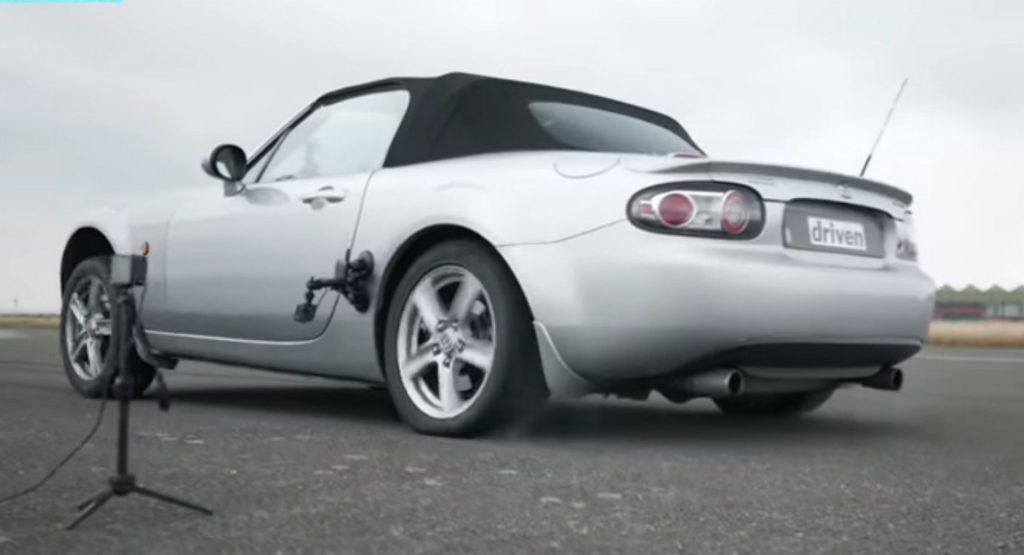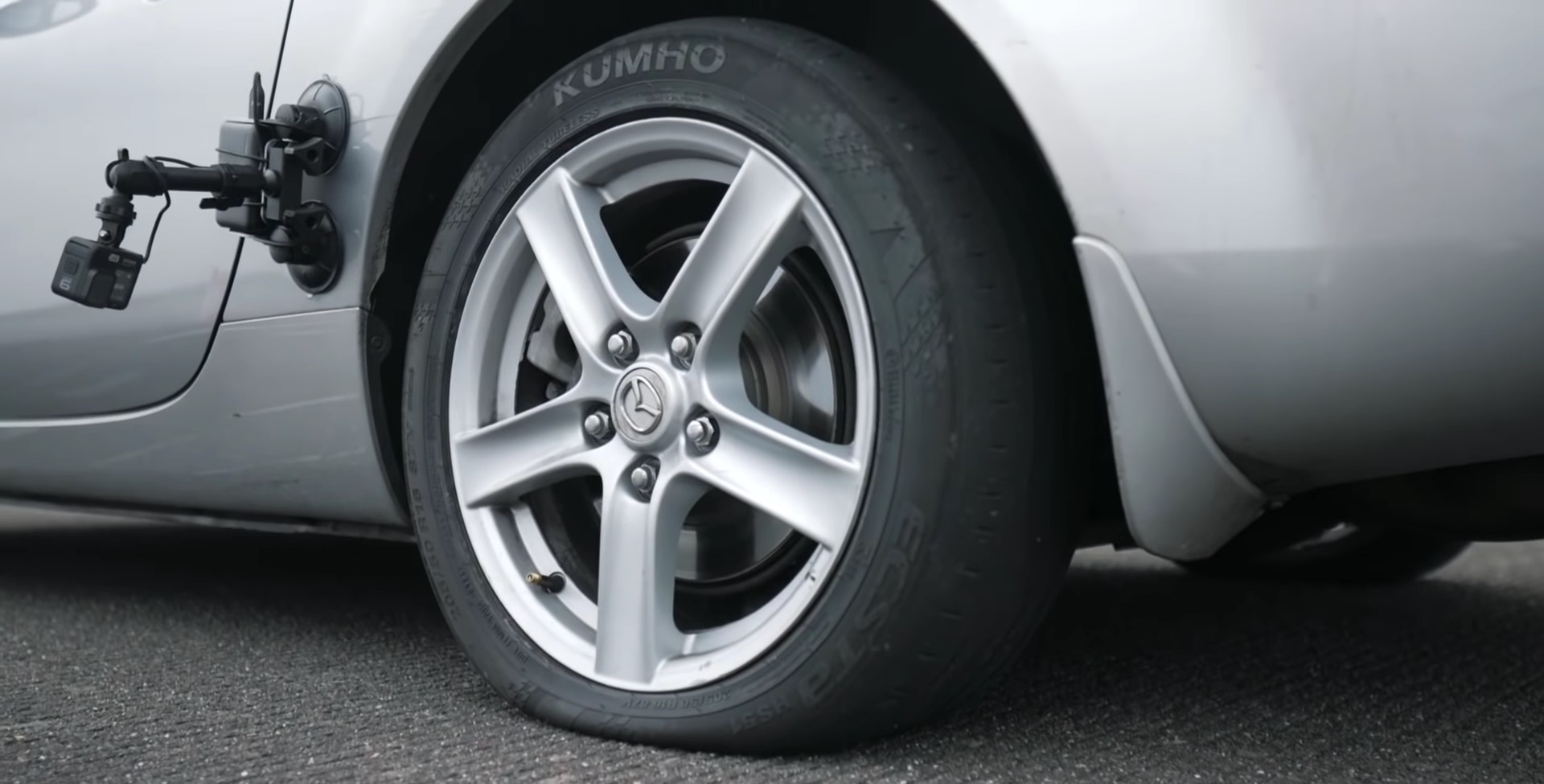In the world of professional drag racing, low tire pressures are often considered to be good for performance. Does that logic translate to road cars and their tires?
Driven Media decided to find out with a Mazda Miata and a tire pressure gauge. In a series of tests, they inflated the tires on their car from the highest PSI they felt safe with to the lowest. That means that the channel ended up doing six eighth-mile runs with tires inflated from 70 PSI to 5 PSI.
The logic behind underinflating tires is actually very complex and there are several suggested advantages for drag racing cars. Not only does the less inflated tire have a larger contact patch (because the sidewall flexes out more), the softness of the tire also makes the circumference of the wheel smaller. On big drag slicks, the crinkling of the tire shrinks the overall size of the wheel, which gives you a gearing advantage at low speeds, and then springs back into shape at higher speeds.
Read Also: Why Do Top Fuel Dragsters Snap In Half Sometimes?
The softer tire is also supposed to allow more weight to transfer to the rear of the vehicle, which should also help with grip. And since the sidewall is softer, the tires are supposed to heat up faster, too.
All of which helps with grip in a drag slick, but can that apply to a road tire in a car with much, much less power than a dragster? The answer might be yes.
Although the difference between runs over an eighth of a mile in a car with modest power isn’t enormous, the testing does suggest (though perhaps not conclusively) that less PSI does increase speed – up to a point.
The video suggests that tire pressure modulation in drag racing is “a bit of a dark art,” one that’s all about trial and error. To be sure, the Miata goes fastest when its tires are inflated to between 10 and 20 PSI. Any less than that and you start to lose pace. Weirdly, though, very high pressures don’t seem to hurt the speed very much.





